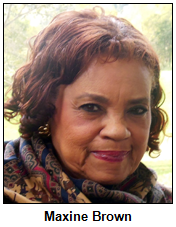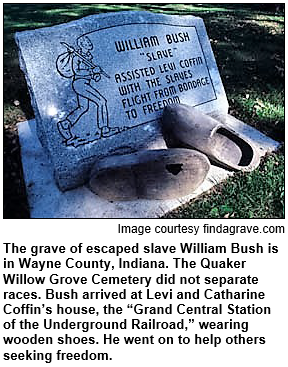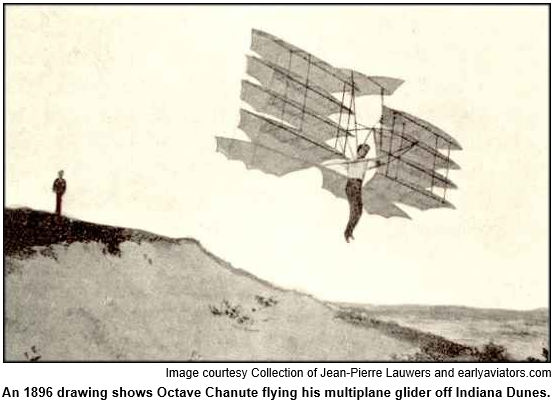July 23, 2016 show
Unheralded heroes of the Underground Railroad
 During the 1830s in Indianapolis, a free African-American landowner named James Overall helped escaped slaves. At one point, Overall, who previously had lived in Corydon, was attacked in his Indianapolis home by a gang of white residents. During the 1830s in Indianapolis, a free African-American landowner named James Overall helped escaped slaves. At one point, Overall, who previously had lived in Corydon, was attacked in his Indianapolis home by a gang of white residents.
In September, a historic marker commemorating Overall will be erected on Indiana Avenue, near where he owned property.
As we explore unheralded heroes of the Underground Railroad, Nelson will be joined in studio by Corydon-based historic preservationist Maxine Brown, who has researched Overall's efforts and crusaded for the marker to be erected by the Indiana Historical Bureau.
Nelson's guests also will include Nick Patler, a graduate of Bethany Theological Seminary who has researched Underground Railroad activity in Wayne County. Nick recently spoke to Indiana Freedom Trails, a nonprofit that is researching and verifying sites and people across the state involved in the Underground Railroad.
 According to Maxine's research, James Overall and his family were listed as "free persons of color" in Corydon in the 1820 U.S. Census; he had purchased property there as early as 1817. By 1830, the family had moved to Indianapolis, where Overall became a trustee of the African Methodist Episcopal Church. According to Maxine's research, James Overall and his family were listed as "free persons of color" in Corydon in the 1820 U.S. Census; he had purchased property there as early as 1817. By 1830, the family had moved to Indianapolis, where Overall became a trustee of the African Methodist Episcopal Church.
In 1836, Overall was attacked in his home by a white gang. One of the gang leaders was briefly jailed, even though Indiana law at the time prohibited blacks from testifying against whites. The gang leader was freed, but the outcry prompted a Marion County judge to write a lengthy opinion (printed in newspapers) arguing that "the natural rights of man" offered all men, including African Americans, some legal protections to defend themselves, their families and their homes.
During this period, Overall helped with Underground Railroad activity. Those he assisted included Jermain Loguen, an escaped slave from Tennessee who eventually because a well-known Underground Railroad activist based in New York.  The historic marker for Overall, sponsored by the Society of Indiana Pioneers, will be dedicated Sept. 29 at 3:30 p.m. The historic marker for Overall, sponsored by the Society of Indiana Pioneers, will be dedicated Sept. 29 at 3:30 p.m.
Our guest Nick Patler will share insights about historic figures who helped escaped slaves in Richmond and elsewhere in Wayne County. Most of the attention in eastern Indiana has focused on Levi and Catharine Coffin, Quakers whose home is a state historic site.
But Nick says several unheralded others took great risks. They include Calvin Outland, a freed slave who arrived with a Quaker migration team in 1831 and who "appears to have become one of the main Underground Railroad operatives in the city of Richmond."
Other heroes include two escaped slaves: William Bush, who settled in Wayne County and, as Nick puts it, "went to work helping other African Americans fleeing bondage," and Louis Talbert, who thwarted slave hunters while helping others like himself.
A major organizer of the Underground Railroad in Richmond was Paul Quinn, a leader in the African Methodist Episcopal Church, according to Nick Patler.
Nick, who wrote his master's thesis about Underground Railroad activity in Wayne County, now lives in Staunton, Va., and is an adjunct professor at Elizabeth State University in North Carolina. He is working on a book about African American leaders in the Deep South during Reconstruction.
 Our guest Maxine Brown is descended from free African Americans who lived in Corydon beginning in the early 1800s. She has been a guest on previous Hoosier History Live shows, including a program about her restoration of a community landmark known historically as the Corydon Colored School. The school, which closed with integration, is now an award-wining cultural center, the Leora Brown School, named in honor of Maxine's aunt, a longtime teacher at the school. Our guest Maxine Brown is descended from free African Americans who lived in Corydon beginning in the early 1800s. She has been a guest on previous Hoosier History Live shows, including a program about her restoration of a community landmark known historically as the Corydon Colored School. The school, which closed with integration, is now an award-wining cultural center, the Leora Brown School, named in honor of Maxine's aunt, a longtime teacher at the school.
In February 2015, Maxine was our guest on a show about African Americans in Indiana during the Civil War, including those who fought in the Union Army.
Learn more:
- Student seeks help with local Underground Railroad research - Richmond Palladium-Item story, July 16, 2014.
- James Overall, Indiana Free Person of Color and the 'Natural Rights of Man' - Indiana Historical Bureau article, July 15, 2016.
- Hoosiers, the Story of Indiana, Birth of a State -WFYI Education Programs, aired July 7, 2016.
- Civil War and African Americans in Indiana - Hoosier History Live newsletter for Feb. 21, 2015 radio program.
- Early African-American settlements - Hoosier History Live newsletter for Feb. 20, 2010 radio program.
- Underground Railroad reality and myths in Indiana - Hoosier History Live newsletter for June 29, 2013 radio program.
Roadtrip: Hindostan Falls in Martin County
 Guest Roadtripper and travel writer Jane Ammeson tells us to visit Hindostan Falls along the East Fork of the White River in Martin County. Guest Roadtripper and travel writer Jane Ammeson tells us to visit Hindostan Falls along the East Fork of the White River in Martin County.
There's not much there now, Jane tells us, but Hindostan Falls was a much livelier place two centuries ago after the 1816 founding of the town of Hindostan, which was named after a British soldier who had served time in India.
By 1820 the town had a booming population that reached 1,200, making it one of the largest settlements in this part of Indiana. Poised on one of the new state's first stagecoach runs connecting New Albany and Vincennes, Hindostan boasted two mills, a hotel, whetstone factory, post office and even a button factory. Ferries made their way between the river's two banks, and houseboats moored on its waters.
Time wasn't kind to Hindostan, and today all that's left of the thriving community are some square cuts in the flat rocks where one of the mills used to be anchored, and stories of spirits haunting Hindostan Falls.
Some towns just fade away, but much of Hindostan disappeared much more quickly, many of its townspeople wiped out by a terrible sickness - yellow fever or cholera or even, some say, the plague. Homes where entire families had died were burned to the ground, and mass graves, some holding a hundred or so, were dug and then hastily filled up.
Hear more from Jane this Saturday!
History Mystery
The first state constitution for Indiana was written during the summer of 1816 in Corydon, where Underground Railroad activist James Overall lived for several years. More than 40 state leaders met 200 years ago in Corydon, Indiana's first capital, to draft the constitution, which banned slavery.
 Because the weather was hot - and the buildings in Corydon felt stifling - the delegates sought relief by meeting under the shade of an enormous tree. Because the weather was hot - and the buildings in Corydon felt stifling - the delegates sought relief by meeting under the shade of an enormous tree.
The landmark tree, which was five feet in diameter, finally died during the 1920s. But its stump is preserved in a shrine in Corydon's historic district.
Question: Under what kind of tree did the leaders draft and debate Indiana's first constitution?
To win the prize, you must call in with the correct answer during the live show and be willing to be placed on the air and be willing to give your contact info to our engineer. The call-in number is (317) 788-3314, and please do not call until you hear Nelson pose the question on the air. Please do not call if you have won a prize from any WICR show during the last two months.
The prize is two admissions to the Go Ape (zipline treetop adventure) at Eagle Creek Park, and a gift certificate to Howl at the Moon restaurant in downtown Indy, courtesy of Visit Indy.
Your Hoosier History Live team,
Nelson Price, host and creative director
Molly Head, producer, (317)
927-9101
Richard Sullivan, webmaster and tech director
Pam Fraizer, graphic designer
Garry Chilluffo, media+development director
www.hoosierhistorylive.org
 
 
 

Please tell our sponsors that you appreciate their support: Five2Five Design | Indiana Authors Award | Indiana Historical Society | Lucas Oil | Mr. Tequila's Cantina & Grill | Story Inn | Visit Indy | Yats Cajun Creole Restaurant
  Acknowledgments to Monomedia, Visit Indy, WICR-FM, Fraizer Designs, Heritage Photo & Research Services, Derrick Lowhorn and many other individuals and organizations. We are an independently produced program and are self-supporting through organizational sponsorships and individual contributions. We do not receive any government funding. Visit our website to learn how you can support us financially. Also, see our Twitter feed and our Facebook page for regular updates. Acknowledgments to Monomedia, Visit Indy, WICR-FM, Fraizer Designs, Heritage Photo & Research Services, Derrick Lowhorn and many other individuals and organizations. We are an independently produced program and are self-supporting through organizational sponsorships and individual contributions. We do not receive any government funding. Visit our website to learn how you can support us financially. Also, see our Twitter feed and our Facebook page for regular updates.
July 30, 2016 show
Bicentennial: today's projects, yesterday's innovators
 As Indiana celebrates its 200th birthday, Hoosier History Live periodically has been exploring a range of topics associated with the milestone. As Indiana celebrates its 200th birthday, Hoosier History Live periodically has been exploring a range of topics associated with the milestone.
During this show, we will share updates about the major capital projects involved with the Bicentennial, including the creation of a Bicentennial Plaza at the Indiana Statehouse, and the plans to construct a building for the Indiana State Archives, which have been housed in a warehouse on the eastside of Indy - and vulnerable to deterioration.
We also will look at historic innovators with Indiana connections who are being honored in grassroots festivities across the state. They include engineer Octave Chanute, whose experiments with gliders on the Indiana Dunes during the 1890s inspired the Wright Brothers.
Our guests will include Perry Hammock, executive director of the Indiana Bicentennial Commission. He recently participated in an event in northwest Indiana honoring Chanute (1832-1910), who was born in Paris and was based in Chicago for many years. But Chanute conducted many of his most significant experiments with gliders at the Dunes near Miller Beach on Lake Michigan.
According to Perry Hammock, the Bicentennial Plaza originally was envisioned as a Centennial Plaza to salute the state's 100th birthday in 1916. Perry will share details about the evolution of the plaza, which will be the setting for a major, multi-sensory event - the Bicentennial Hoosier Homecoming - on Oct. 15. The festivities will include the return of the Bicentennial torch after it has traveled to all 92 counties.
Speaking of the torch: We will share details about the Hoosiers selected as torch bearers during its route, which begins Sept. 9 in Corydon. According to news accounts, the carriers total nearly 2,000 Hoosiers, including some who have been Hoosier History Live guests, such as filmmaker Angelo Pizzo of Hoosiers and Rudy fame.
In May 2015, Indiana State Archivist Jim Corridan and Stephen Towne, president of the Friends of the State Archives, joined Nelson for a show that explored the range of material (from the two Indiana Constitutions to prison records of John Dillinger) that is housed in the archives. The guests also discussed the dire need for a climate-controlled building to house the archives, following an appropriation of $25 million by the legislature. According to recent news accounts, the most likely site is located near the IUPUI campus.
Our previous shows exploring aspects of the Bicentennial have included a program last January with Perry Hammock and First Lady Karen Pence, the official Bicentennial ambassador, as Nelson's studio guests.
© 2016 Hoosier History Live! All rights reserved.
|